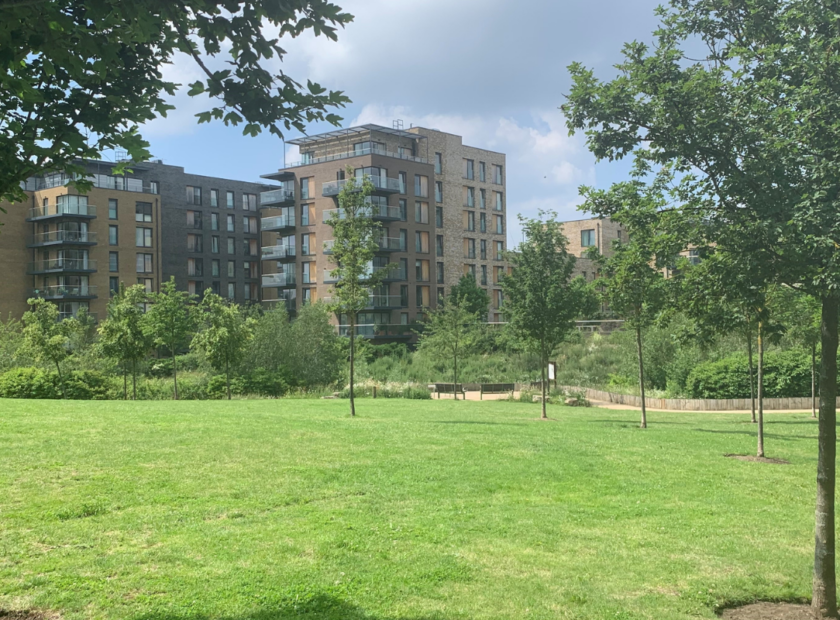I heard the old African saying ‘Health is made at home, hospitals are for repairs’ from a Ugandan friend. It reminded him, he told me, of growing up in his home village where everyone knew everyone else. Children playing with their friends, running around freely in the village and the countryside, learning about life from the older children and the adults, joining in community activities, growing up knowing their history and customs and how to relate to their society and environment. Fit, healthy and confident.
My friend is in his 70s and I doubt there are many African villages like that anymore. It’s certainly not how British children generally grow up. But the saying does point to important ideas about relationships, communities, confidence and the environment. And it suggests the very powerful idea that health can be created.
Health and wellbeing are about so much more than the absence of disease. They are about life and freedom, being all that we can be. They are about our relationships, how we live, and what happens to us at work and at school. And they are about confidence and control, and the quality of our lives. Because of this, our health as individuals is intimately connected to the health of our communities and our society – and, ultimately, our environment and our planet.
And creating health is not just about preventing diseases. It is about providing the conditions in which people can be healthy and helping them to be so. It’s what a parent does when they care for their child, helping them grow up healthy. And what a good teacher does. And a good employer. And a good community. All of them exercising a profound and positive influence and helping create resilient, confident, capable and healthy individuals.
I have spent part of the last year talking to people in the UK who are creating health. The employers, teachers, architects, community leaders, planners and families who are creating health in their homes, workplaces, schools and communities. Their stories are compelling, and they have a great deal to teach us all about health. Health professionals talk often about the causes of ill health but rarely about the causes of health.
I believe we now need to focus on creating health alongside preventing disease and delivering health services. All three areas are of vital importance. Doing the repairs and disease prevention are only part of what’s needed. And the NHS and government need to work with and learn from the health creators in every sector.
Good design, architecture, planning, place-making, housing and access to fresh air, green spaces and nature are all vital to our health and wellbeing. Their absence damages our physical and mental health in so many different ways. And, as the pioneers of the 19th and early 20th century knew so well, their presence can enhance our whole lives, creating health and wellbeing for the benefit of individuals, wider society and the economy.
Covid-19 has reinforced these points. Confined to our homes, some of us are fortunate enough to have space and gardens, views and privacy. Others have been trapped in cramped and crowded conditions which in some cases have aggravated tensions and conflict. And millions of us have been reminded how greenery, nature and gardening can create wellbeing and reduce stress and anxiety. It will surely require us to look again at how we design homes, estates and communities to avoid these problems in any future lockdowns. But it should also make us think positively about how good design and planning can help create health and wellbeing.
The UK has a great tradition in design and architecture and can call on people and organisations with enormous skills and expertise in designing healthy environments. Healthy living has become a vibrant and innovative part of the way people now think about place and environment and there are some marvellous examples of creating health. But, as the Raynsford Review of Planning has shown us, successive governments have de-regulated to the point that we are seeing new 21st century slums being built. The market simply doesn’t work for the poorest in our society. They have to accept the housing they can get, whatever its size and design, however dark, cramped and potentially unsafe.
The proposed Healthy Homes Act will not constrain innovation but seeks minimum standards in ten key areas – from space and access to natural light to carbon emissions, better sound proofing and good security. These are the minimum that are needed to create the sort of healthy homes and communities that provide the conditions in which people can be healthy and help them to be so.
Nigel Crisp is a crossbench peer. He was Chief Executive of the English NHS and Permanent Secretary of the UK Department of Health from 2000 to 2006. His latest book ‘Health is made at home, hospitals are for repairs – building a healthy and health-creating society’ is published by SALUS on 29 June at £9.99. You can register for the launch webinar and pre-order copies at www.healthismadeathome.uk
The TCPA is participating in a series of follow-on webinars on ‘Building a healthy and health-creating society’ from 14 July. Details will be available shortly on the above website.
This article was as part of a series of expert blogs for the TCPA’s Healthy Homes Act campaign.



